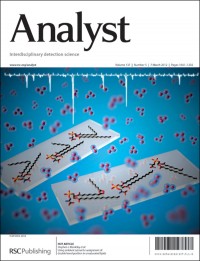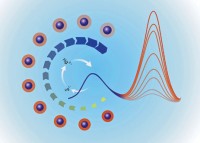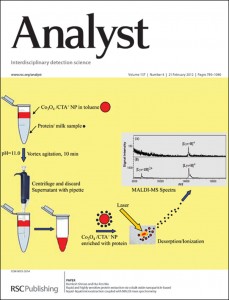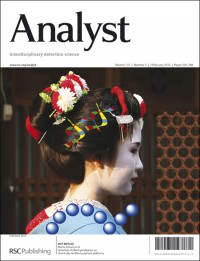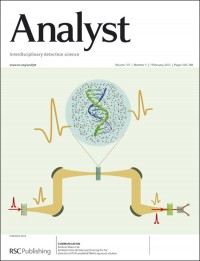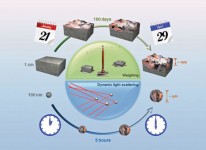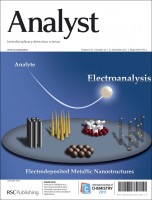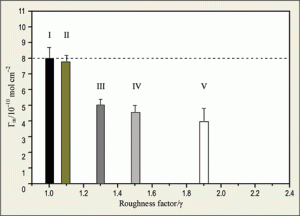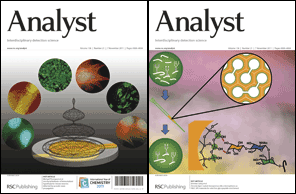
Analyst, 2012, 137(1): 1-276
An early New Year present from Analyst: it’s Issue 1 of 2012, which has now been published online.
We start the year as we mean to go on, with some excellent cover articles with equally good cover images.
On the front cover is an article from Jason Greenwood and colleagues from Queen’s University, Belfast on mass spectra obtained from the interaction of intense, femtosecond laser pulses with 1,3-butadiene, 1-butene, and n-butane. They discuss potential mass spectrometry applications of the technique, such as the analysis of catalytic reaction products.
Communication: Femtosecond lasers for mass spectrometry: Proposed application to catalytic hydrogenation of butadiene
Orla Kelly, Martin J. Duffy, Raymond B. King, Louise Belshaw, Ian D. Williams, Jacinto Sá, Chris R. Calvert and Jason B. Greenwood
Analyst, 2012, 137, 64-69
DOI: 10.1039/C1AN15706J
Research from Analyst Editorial Board members features on the other covers of Issue 1. On the inside front cover, Justin Gooding and colleagues from the University of New South Wales describe a simple colorimetric method for the detection of copper ions in water. Nanoparticle cross-linking, evidenced as a colour change, is used for the detection of copper ions.
A novel route to copper(II) detection using ‘click’ chemistry-induced aggregation of gold nanoparticles
Carol Hua, William H. Zhang, Swahnnya R. M. De Almeida, Simone Ciampi, Danmar Gloria, Guozhen Liu, Jason B. Harper and J. Justin Gooding
Analyst, 2012, 137, 82-86
DOI: 10.1039/C1AN15693D
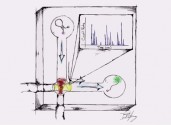
On the outside back cover, Steven Soper and co-workers report a simple and compact fluorescence single-molecule instrument that is straightforward to operate and consists of fiber optics directly coupled to a microfluidic device.
Design and development of a field-deployable single-molecule detector (SMD) for the analysis of molecular markers
Jason M. Emory, Zhiyong Peng, Brandon Young, Mateusz L. Hupert, Arnold Rousselet, Donald Patterson, Brad Ellison and Steven A. Soper
Analyst, 2012, 137, 87-97
DOI: 10.1039/C1AN15658F
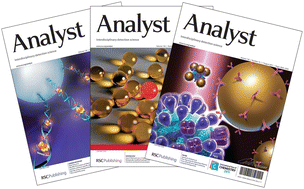 Issue 1 of 2012 also contains information on all our Editorial Board members and an Editorial from Paul Bohn, Chair of the Board and May Copsey, Editor of Analyst.
Issue 1 of 2012 also contains information on all our Editorial Board members and an Editorial from Paul Bohn, Chair of the Board and May Copsey, Editor of Analyst.
Editorial: Analyst, unconfined by traditional discipline barriers
Analyst, 2012, 137, 17-20
DOI: 10.1039/C1AN90099D
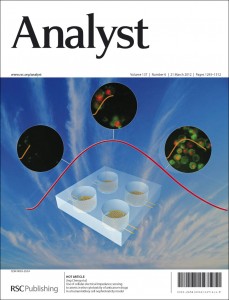 Analyst issue 6 is now published online with three exciting articles featured on the covers!
Analyst issue 6 is now published online with three exciting articles featured on the covers!










